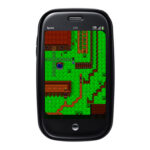 Welcome to the next big thing: webOS. Palm’s new smartphone, the Pre running their brand new operating system, webOS truly breaks new ground. webOS represents an evolutionary step that does to smartphones what Web 2.0 did to the Internet. Keep in mind, we’re talking about webOS, not the Pre. While the Pre is a solid piece of technology, it’s basically a lot of existing hardware re-arranged in a nice package. The evolutionary step comes from Palm’s new operating system. Lets look at two big pieces:
Welcome to the next big thing: webOS. Palm’s new smartphone, the Pre running their brand new operating system, webOS truly breaks new ground. webOS represents an evolutionary step that does to smartphones what Web 2.0 did to the Internet. Keep in mind, we’re talking about webOS, not the Pre. While the Pre is a solid piece of technology, it’s basically a lot of existing hardware re-arranged in a nice package. The evolutionary step comes from Palm’s new operating system. Lets look at two big pieces:
Interoperability
Remember when we first adopted technologies such as RSS feeds and publicly available Web application APIs? The design change was a shift to better interoperability for the user. The result was a better overall user experience on the Internet.
This concept is echoed all over in webOS’s design fundamentals. The recent cat and mouse game with Apple over iTunes is the most widely known and obvious example. This was never an issue for me. I use Ubuntu as my desktop operating system. There’s no version of iTunes for Ubuntu. Even if there was, I wouldn’t use it. I prefer to simply copy my DRM free music right from my hard drive onto the Pre. Increasingly, people want the media they buy to play on all the devices they own. With webOS on the Pre, it’s just that easy – without installing any additional software.
Palm introduced us to the world of device syncing a long time ago. This is how most iPhone and iPod users update their music now. Unlike these devices, the Palm does not require any additional software installations for the user. In fact, information like calendars, phone numbers, and even your facebook accounts are all kept in sync over the wireless connection.
Palm is making it a point to have webOS openly communicating in every way it can. In a way, a Pre running webOS is a well established little node of your social network. If you’re chatting with a friend over google chat and they go offline, you’ll automatically switch to sending text messages to their phone. The experience is seemless from your point of view.
Application Development
I recently installed the Palm Mojo SDK and built my first test app. With my existing CSS knowledge, I laid out a simple tile based grid with a sprite on top. I was surprised to recognize the MVC architecture of the framework. I’m familiar with MVC from building Web applications. Any Web 2.0 era developer will likely remember how things changed with MVC frameworks first came on the scene. The big difference here is that the language is javascript and the application runs on the smartphone client instead of a web server.
A significant section of the tech community criticized the SDK. It’s entirely true that developing games that take advantage of the machine’s hardware is not possible in the SDK. However, early homebrewers had 3D videogames running on the Pre before the SDK was released. The Pre and webOS have the capacity for gaming level graphics.
The Mojo SDK creates a low barrier of entry to thousands of Web developers interested in building smartphone apps. If you want a simple interface for your Web app, building it on the Pre is extremely easy.
Conclusion
If you’re like me, and you’re a fan of Clay Shirky, you might already see the formula that’s at play here. Palm opened up channels to lots of existing technology by improving interoperability in webOS. Then, Palm made it easy and inviting to come contribute to this new exploration. Palm didn’t just release a great smartphone, they created an architecture for participation. Thank you Palm.
Leave a Reply